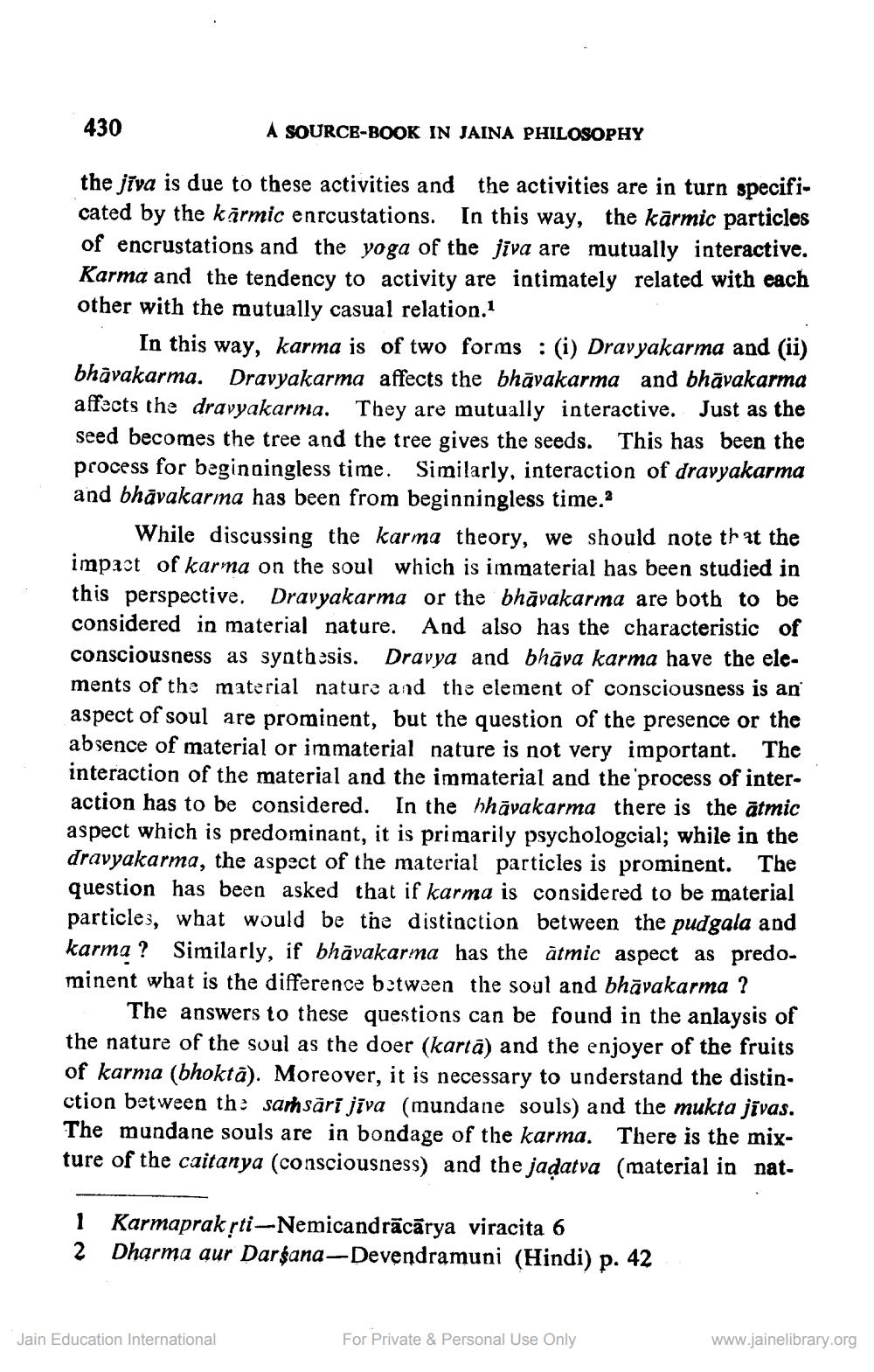________________
430
A SOURCB-BOOK IN JAINA PHILOSOPHY
the jīva is due to these activities and the activities are in turn specificated by the karmic enrcustations. In this way, the kārmic particles of encrustations and the yoga of the jiva are mutually interactive. Karma and the tendency to activity are intimately related with each other with the mutually casual relation.1
In this way, karma is of two forms : (i) Dravyakarma and (ii) bhävakarma. Dravyakarma affects the bhāvakarma and bhāvakarma affects the dravyakarma. They are mutually interactive. Just as the seed becomes the tree and the tree gives the seeds. This has been the process for beginningless time. Similarly, interaction of dravyakarma and bhāvakarma has been from beginningless time.
While discussing the karma theory, we should note that the impact of karma on the soul which is immaterial has been studied in this perspective. Dravyakarma or the bhāvakarma are both to be considered in material nature. And also has the characteristic of consciousness as synthesis. Dravya and bhāva karma have the elements of the material nature and the element of consciousness is an aspect of soul are prominent, but the question of the presence or the absence of material or immaterial nature is not very important. The interaction of the material and the immaterial and the process of interaction has to be considered. In the hhāvakarma there is the atmic aspect which is predominant, it is primarily psychologcial; while in the dravyakarma, the aspect of the material particles is prominent. The question has been asked that if karma is considered to be material particles, what would be the distinction between the pudgala and karma ? Similarly, if bhāvakarma has the atmic aspect as predo. minent what is the difference between the soul and bhāvakarma ?
The answers to these questions can be found in the anlaysis of the nature of the soul as the doer (karta) and the enjoyer of the fruits of karma (bhoktā). Moreover, it is necessary to understand the distin. ction between the sarhsārī jīva (mundane souls) and the mukta jīvas. The mundane souls are in bondage of the karma. There is the mixture of the caitanya (consciousness) and the jadatva (material in nat
1 Karmapraksti-Nemicandrācārya viracita 6 2 Dharma aur Darsana-Devendramuni (Hindi) p. 42
Jain Education International
For Private & Personal Use Only
www.jainelibrary.org




